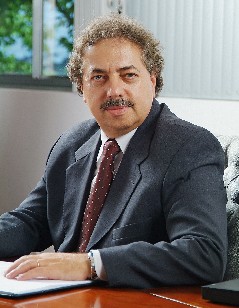The most recent entry into the light-vehicle brake pad market is FRAS-LE. The company has been a player in the heavy-duty truck brake block market in North America for more than 30 years and claims more than 33 percent of the market. The FRAS-LE catalog consists of more than 9,000 part numbers with coverage for everything from motorcycles to trains. The company is an OEM brake pads supplier for North American and Latin American automotive and truck makers. Recently, FRAS-LE North America launched a new line of aftermarket light-vehicle brake pads. The FRAS-LE line launched with four district lines of formulations with broad coverage, even including a line for medium-duty trucks and fleet vehicles. All four lines will cover more than 1,400 applications and have more than 860 part numbers. Heading up the launch for FRAS-LE is brake industry veteran Zomar Oliveira as the director of North American operations. Oliveira brings more than 30 years of experience in the automotive industry to the position. He has been with the Randon organization since 2004 and joined the FRAS-LE North America operation in 2008. Prior to his role within the Randon organization, Oliveira worked for companies including Bendix of Brazil, Wabco, AlliedSignal Automotive and Robert Bosch.
FRAS-LE is a Brazil-based manufacturer of friction products and has been in business since 1954. The company is part of the Randon Group, which focuses on manufacturing heavy-duty truck trailers, suspension systems, brake systems, parts and construction vehicles.
Why enter into the very competitive North American light-vehicle friction material market at this time?
Randon’s and FRAS-LE’s goal is growth on a global scale. In Brazil, FRAS-LE has 48 percent of the OE light-vehicle market and more than 60 percent of the aftermarket. It would be difficult to gain significant market share in Brazil or even Latin America. North America is one of the largest markets for friction materials. FRAS-LE believes the North American friction material aftermarket has significant growth opportunities.
What is your assessment of the North American light-vehicle brake pad market?
The current market is very competitive, not just in terms of pricing, but customer expectations for quality, value and service throughout the supply chain. Every large aftermarket parts manufacturer wants to be in the friction material business because brake pads always wear out and it is very profitable. But, if a company or brand loses focus or momentum due to internal factors, it can quickly lead to a sharp decline in their overall market share.
Some of the top players are dealing with bankruptcies, pressures from private equity owners and other distractions to their friction business. FRAS-LE’s core business is friction, and we plan to grow through this part of our business.
How does this create an advantage for FRAS-LE?
FRAS-LE is a mature company on strong financial footing. This gives FRAS-LE the ability to research and manufacture the best possible friction products.
With our size in the global friction market, we have strong purchasing power to help control raw material costs. Currently, we process more than 220,000 tons of raw materials a day, with the capability to handle considerably more. This means we can deliver a superior friction product at a competitive price.
This fall Randon is opening a proving grounds on 220 acres of land in the south of Brazil to test its products in real-world conditions. We are one of the only friction manufacturers with a proving grounds of this scale. We also have world-class research facilities, pilot plants and manufacturing facilities. We also perform on-vehicle testing with a fleet of company-owned vehicles.
What is your launch strategy?
FRAS-LE spent more than five years researching the North American light-vehicle aftermarket. FRAS-LE realized that to enter into the North American market you have to target the professional technician and the warehouse distributors.
The aftermarket supply chain and technicians need different lines with distinct formulations to properly service customers. We are launching four lines that are not just based on price but on the needs of the North American driver and vehicle. Every application has been engineered for a specific platform or vehicle.
We have developed the coverage and a catalog that will meet and exceed the needs of the customer. Our catalog has more than 1,400 applications with 860 part numbers.
The initial reception at the warehouse distributor level has been good.
What are FRAS-LE’s plans for the future?
We are here to stay. We are not here just to sell some product and leave. We have had offices in the United States since 1989. In 2008, we purchased the brake linings business from Haldex Brake Products Corp. including a brake pad plant in Prattville, Ala. The plant manufactures friction material for the North American market and is currently operating at 20 percent capacity. We look forward to being a dominant, long-term force in this market.













